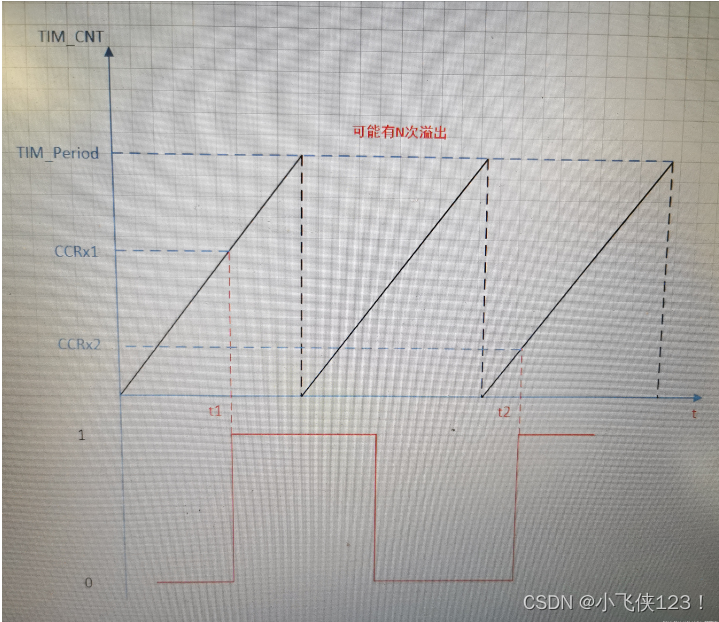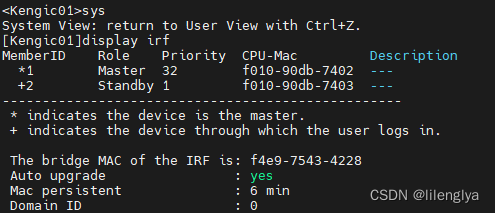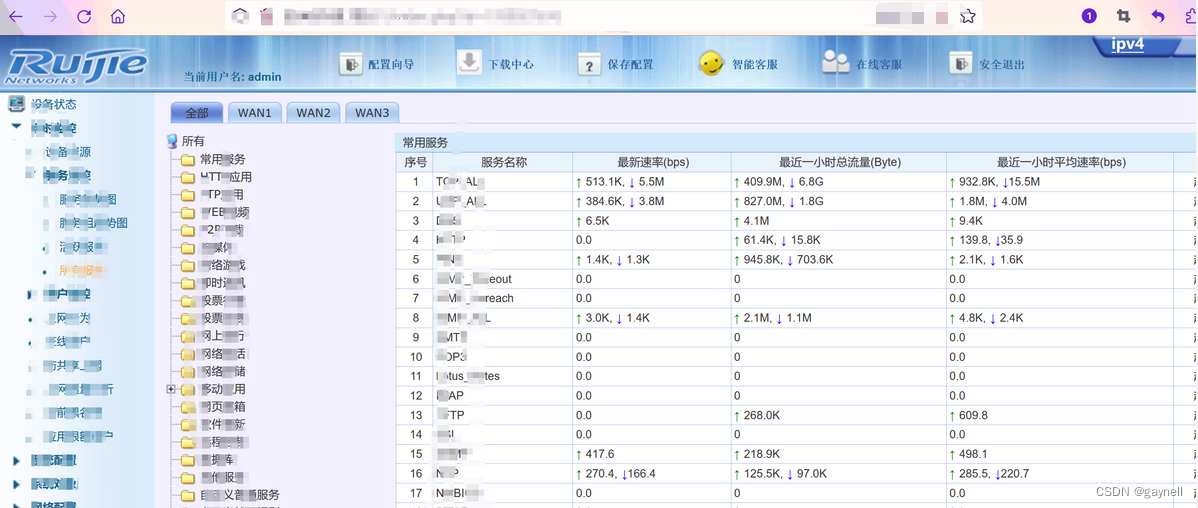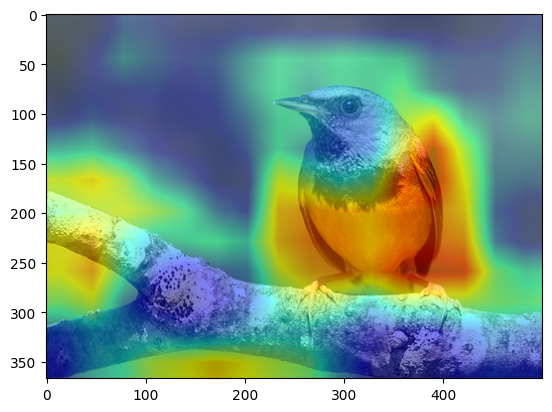Class7: MMDetection代码课
文章目录
- Class7: MMDetection代码课
- @[toc]
- 依赖&安装
- 依赖
- 数据集准备
- RTMDet
- Config
- 模型配置
- 数据集和评测器配置
- 训练和测试的配置
- 优化相关配置
- 训练
- 测试以及推理
- 可视化分析
- 特征图可视化
- Grad-Based CAM 可视化
- 检测新趋势
- 总结
- 总结
文章目录
- Class7: MMDetection代码课
- @[toc]
- 依赖&安装
- 依赖
- 数据集准备
- RTMDet
- Config
- 模型配置
- 数据集和评测器配置
- 训练和测试的配置
- 优化相关配置
- 训练
- 测试以及推理
- 可视化分析
- 特征图可视化
- Grad-Based CAM 可视化
- 检测新趋势
- 总结
- 总结
课程:MMDetection代码课_哔哩哔哩_bilibili
Repo:open-mmlab/mmdetection: OpenMMLab Detection Toolbox and Benchmark (github.com)
依赖&安装
依赖
基于 PyTorch 官方说明安装 PyTorch。
在 GPU 平台上:
conda install pytorch torchvision -c pytorch
在 CPU 平台上:
conda install pytorch torchvision cpuonly -c pytorch
使用 MIM 安装 MMEngine 和 MMCV。
pip install -U openmim
mim install mmengine
mim install "mmcv>=2.0.0"
安装 MMDetection。
方案 a:如果开发并直接运行 mmdet,从源码安装它:
git clone https://github.com/open-mmlab/mmdetection.git
cd mmdetection
pip install -v -e .
# "-v" 指详细说明,或更多的输出
# "-e" 表示在可编辑模式下安装项目,因此对代码所做的任何本地修改都会生效,从而无需重新安装。
方案 b:如果将 mmdet 作为依赖或第三方 Python 包,使用 MIM 安装:
mim install mmdet
数据集准备
Cat 数据集是一个包括 144 张图片的单类别数据集, 包括了训练所需的标注信息。 样例图片如下所示:
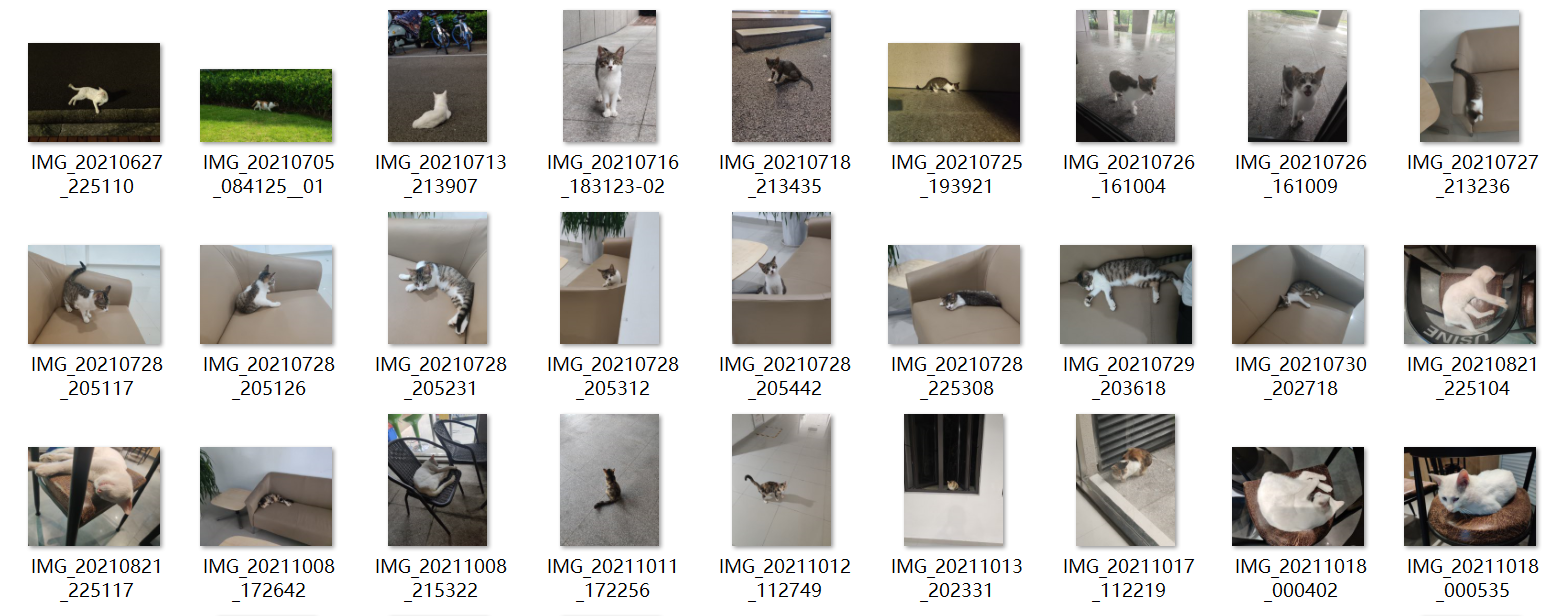
RTMDet
拥有一个高效的模型结构是设计实时目标检测器最关键的问题之一。自 YOLOv4 将 Cross Stage Partial Network 的结构引入 DarkNet 之后,CSPDarkNet 因其简洁高效而被广泛应用于 YOLO 系列的各个改进版中。
而 RTMDet 也将 CSPDarkNet 作为基线,并使用同样构建单元组成的 CSPPAFPN 进行多尺度的特征融合,最后将特征输入给不同的检测头,进行目标检测、实例分割和旋转框检测等任务。整体的模型结构如下图所示:

RTMDet 由 tiny/s/m/l/x 一系列不同大小的模型组成,为不同的应用场景提供了不同的选择。
其中,RTMDet-x 在 52.6 mAP 的精度下达到了 300+ FPS 的推理速度。
注:推理速度和精度测试(不包含 NMS)是在 1 块 NVIDIA 3090 GPU 上的 `TensorRT 8.4.3, cuDNN 8.2.0, FP16, batch size=1 条件里测试的。
而最轻量的模型 RTMDet-tiny,在仅有 4M 参数量的情况下也能够达到 40.9 mAP,且推理速度 < 1 ms。
Config
MMDetection 和其他 OpenMMLab 仓库使用 MMEngine 的配置文件系统。 配置文件使用了模块化和继承设计,以便于进行各类实验。
模型配置
model = dict(
type='RTMDet', # The name of detector
data_preprocessor=dict( # The config of data preprocessor, usually includes image normalization and padding
type='DetDataPreprocessor', # The type of the data preprocessor. Refer to https://mmdetection.readthedocs.io/en/latest/api.html#mmdet.models.data_preprocessors.DetDataPreprocessor
mean=[103.53, 116.28, 123.675], # Mean values used to pre-training the pre-trained backbone models, ordered in R, G, B
std=[57.375, 57.12, 58.395], # Standard variance used to pre-training the pre-trained backbone models, ordered in R, G, B
bgr_to_rgb=False, # whether to convert image from BGR to RGB
batch_augments=None), # Batch-level augmentations
backbone=dict( # The config of backbone
type='CSPNeXt', # The type of backbone network. Refer to https://mmdetection.readthedocs.io/en/latest/api.html#mmdet.models.backbones.CSPNeXt
arch='P5', # Architecture of CSPNeXt, from {P5, P6}. Defaults to P5
expand_ratio=0.5, # Ratio to adjust the number of channels of the hidden layer. Defaults to 0.5
deepen_factor=1, # Depth multiplier, multiply number of blocks in CSP layer by this amount. Defaults to 1.0
widen_factor=1, # Width multiplier, multiply number of channels in each layer by this amount. Defaults to 1.0
channel_attention=True, # Whether to add channel attention in each stage. Defaults to True
norm_cfg=dict(type='SyncBN'), # Dictionary to construct and config norm layer. Defaults to dict(type=’BN’, requires_grad=True)
act_cfg=dict(type='SiLU', inplace=True)), # Config dict for activation layer. Defaults to dict(type=’SiLU’)
neck=dict(
type='CSPNeXtPAFPN', # The type of neck is CSPNeXtPAFPN. Refer to https://mmdetection.readthedocs.io/en/latest/api.html#mmdet.models.necks.CSPNeXtPAFPN
in_channels=[256, 512, 1024], # Number of input channels per scale
out_channels=256, # Number of output channels (used at each scale)
num_csp_blocks=3, # Number of bottlenecks in CSPLayer. Defaults to 3
expand_ratio=0.5, # Ratio to adjust the number of channels of the hidden layer. Default: 0.5
norm_cfg=dict(type='SyncBN'), # Config dict for normalization layer. Default: dict(type=’BN’)
act_cfg=dict(type='SiLU', inplace=True)), # Config dict for activation layer. Default: dict(type=’Swish’)
bbox_head=dict(
type='RTMDetSepBNHead', # The type of bbox_head is RTMDetSepBNHead. RTMDetHead with separated BN layers and shared conv layers. Refer to https://mmdetection.readthedocs.io/en/latest/api.html#mmdet.models.dense_heads.RTMDetSepBNHead
num_classes=80, # Number of categories excluding the background category
in_channels=256, # Number of channels in the input feature map
stacked_convs=2, # Whether to share conv layers between stages. Defaults to True
feat_channels=256, # Feature channels of convolutional layers in the head
anchor_generator=dict( # The config of anchor generator
type='MlvlPointGenerator', # The methods use MlvlPointGenerator. Refer to https://github.com/open-mmlab/mmdetection/blob/main/mmdet/models/task_modules/prior_generators/point_generator.py#L92
offset=0, # The offset of points, the value is normalized with corresponding stride. Defaults to 0.5
strides=[8, 16, 32]), # Strides of anchors in multiple feature levels in order (w, h)
bbox_coder=dict(type='DistancePointBBoxCoder'), # Distance Point BBox coder.This coder encodes gt bboxes (x1, y1, x2, y2) into (top, bottom, left,right) and decode it back to the original. Refer to https://github.com/open-mmlab/mmdetection/blob/main/mmdet/models/task_modules/coders/distance_point_bbox_coder.py#L9
loss_cls=dict( # Config of loss function for the classification branch
type='QualityFocalLoss', # Type of loss for classification branch. Refer to https://mmdetection.readthedocs.io/en/latest/api.html#mmdet.models.losses.QualityFocalLoss
use_sigmoid=True, # Whether sigmoid operation is conducted in QFL. Defaults to True
beta=2.0, # The beta parameter for calculating the modulating factor. Defaults to 2.0
loss_weight=1.0), # Loss weight of current loss
loss_bbox=dict( # Config of loss function for the regression branch
type='GIoULoss', # Type of loss. Refer to https://mmdetection.readthedocs.io/en/latest/api.html#mmdet.models.losses.GIoULoss
loss_weight=2.0), # Loss weight of the regression branch
with_objectness=False, # Whether to add an objectness branch. Defaults to True
exp_on_reg=True, # Whether to use .exp() in regression
share_conv=True, # Whether to share conv layers between stages. Defaults to True
pred_kernel_size=1, # Kernel size of prediction layer. Defaults to 1
norm_cfg=dict(type='SyncBN'), # Config dict for normalization layer. Defaults to dict(type='BN', momentum=0.03, eps=0.001)
act_cfg=dict(type='SiLU', inplace=True)), # Config dict for activation layer. Defaults to dict(type='SiLU')
train_cfg=dict( # Config of training hyperparameters for ATSS
assigner=dict( # Config of assigner
type='DynamicSoftLabelAssigner', # Type of assigner. DynamicSoftLabelAssigner computes matching between predictions and ground truth with dynamic soft label assignment. Refer to https://github.com/open-mmlab/mmdetection/blob/main/mmdet/models/task_modules/assigners/dynamic_soft_label_assigner.py#L40
topk=13), # Select top-k predictions to calculate dynamic k best matches for each gt. Defaults to 13
allowed_border=-1, # The border allowed after padding for valid anchors
pos_weight=-1, # The weight of positive samples during training
debug=False), # Whether to set the debug mode
test_cfg=dict( # Config for testing hyperparameters for ATSS
nms_pre=30000, # The number of boxes before NMS
min_bbox_size=0, # The allowed minimal box size
score_thr=0.001, # Threshold to filter out boxes
nms=dict( # Config of NMS in the second stage
type='nms', # Type of NMS
iou_threshold=0.65), # NMS threshold
max_per_img=300), # Max number of detections of each image
)
数据集和评测器配置
数据 dataloader 需要设置数据集(dataset)和数据处理流程(data pipeline)。 由于这部分的配置较为复杂,使用中间变量来简化 dataloader 配置的编写。
dataset_type = 'CocoDataset' # 数据集类型,这将被用来定义数据集。
data_root = 'data/coco/' # 数据的根路径。
train_pipeline = [ # 训练数据处理流程
dict(type='LoadImageFromFile'), # 第 1 个流程,从文件路径里加载图像。
dict(
type='LoadAnnotations', # 第 2 个流程,对于当前图像,加载它的注释信息。
with_bbox=True, # 是否使用标注框(bounding box), 目标检测需要设置为 True。
with_mask=True, # 是否使用 instance mask,实例分割需要设置为 True。
poly2mask=False), # 是否将 polygon mask 转化为 instance mask, 设置为 False 以加速和节省内存。
dict(
type='Resize', # 变化图像和其标注大小的流程。
scale=(1333, 800), # 图像的最大尺寸
keep_ratio=True # 是否保持图像的长宽比。
),
dict(
type='RandomFlip', # 翻转图像和其标注的数据增广流程。
prob=0.5), # 翻转图像的概率。
dict(type='PackDetInputs') # 将数据转换为检测器输入格式的流程
]
test_pipeline = [ # 测试数据处理流程
dict(type='LoadImageFromFile'), # 第 1 个流程,从文件路径里加载图像。
dict(type='Resize', scale=(1333, 800), keep_ratio=True), # 变化图像大小的流程。
dict(
type='PackDetInputs', # 将数据转换为检测器输入格式的流程
meta_keys=('img_id', 'img_path', 'ori_shape', 'img_shape',
'scale_factor'))
]
train_dataloader = dict( # 训练 dataloader 配置
batch_size=2, # 单个 GPU 的 batch size
num_workers=2, # 单个 GPU 分配的数据加载线程数
persistent_workers=True, # 如果设置为 True,dataloader 在迭代完一轮之后不会关闭数据读取的子进程,可以加速训练
sampler=dict( # 训练数据的采样器
type='DefaultSampler', # 默认的采样器,同时支持分布式和非分布式训练。请参考 https://mmengine.readthedocs.io/zh_CN/latest/api/generated/mmengine.dataset.DefaultSampler.html#mmengine.dataset.DefaultSampler
shuffle=True), # 随机打乱每个轮次训练数据的顺序
batch_sampler=dict(type='AspectRatioBatchSampler'), # 批数据采样器,用于确保每一批次内的数据拥有相似的长宽比,可用于节省显存
dataset=dict( # 训练数据集的配置
type=dataset_type,
data_root=data_root,
ann_file='annotations/instances_train2017.json', # 标注文件路径
data_prefix=dict(img='train2017/'), # 图片路径前缀
filter_cfg=dict(filter_empty_gt=True, min_size=32), # 图片和标注的过滤配置
pipeline=train_pipeline)) # 这是由之前创建的 train_pipeline 定义的数据处理流程。
val_dataloader = dict( # 验证 dataloader 配置
batch_size=1, # 单个 GPU 的 Batch size。如果 batch-szie > 1,组成 batch 时的额外填充会影响模型推理精度
num_workers=2, # 单个 GPU 分配的数据加载线程数
persistent_workers=True, # 如果设置为 True,dataloader 在迭代完一轮之后不会关闭数据读取的子进程,可以加速训练
drop_last=False, # 是否丢弃最后未能组成一个批次的数据
sampler=dict(
type='DefaultSampler',
shuffle=False), # 验证和测试时不打乱数据顺序
dataset=dict(
type=dataset_type,
data_root=data_root,
ann_file='annotations/instances_val2017.json',
data_prefix=dict(img='val2017/'),
test_mode=True, # 开启测试模式,避免数据集过滤图片和标注
pipeline=test_pipeline))
test_dataloader = val_dataloader # 测试 dataloader 配置
用于计算训练模型在验证和测试数据集上的指标。评测器的配置由一个或一组评价指标(Metric)配置组成:
val_evaluator = dict( # 验证过程使用的评测器
type='CocoMetric', # 用于评估检测和实例分割的 AR、AP 和 mAP 的 coco 评价指标
ann_file=data_root + 'annotations/instances_val2017.json', # 标注文件路径
metric=['bbox', 'segm'], # 需要计算的评价指标,`bbox` 用于检测,`segm` 用于实例分割
format_only=False)
test_evaluator = val_evaluator # 测试过程使用的评测器
由于测试数据集没有标注文件,因此 MMDetection 中的 test_dataloader 和 test_evaluator 配置通常等于val。 如果要保存在测试数据集上的检测结果,则可以像这样编写配置:
# 在测试集上推理,
# 并将检测结果转换格式以用于提交结果
test_dataloader = dict(
batch_size=1,
num_workers=2,
persistent_workers=True,
drop_last=False,
sampler=dict(type='DefaultSampler', shuffle=False),
dataset=dict(
type=dataset_type,
data_root=data_root,
ann_file=data_root + 'annotations/image_info_test-dev2017.json',
data_prefix=dict(img='test2017/'),
test_mode=True,
pipeline=test_pipeline))
test_evaluator = dict(
type='CocoMetric',
ann_file=data_root + 'annotations/image_info_test-dev2017.json',
metric=['bbox', 'segm'],
format_only=True, # 只将模型输出转换为 coco 的 JSON 格式并保存
outfile_prefix='./work_dirs/coco_detection/test') # 要保存的 JSON 文件的前缀
训练和测试的配置
MMEngine 的 Runner 使用 Loop 来控制训练,验证和测试过程。 用户可以使用这些字段设置最大训练轮次和验证间隔。
train_cfg = dict(
type='EpochBasedTrainLoop', # 训练循环的类型,请参考 https://github.com/open-mmlab/mmengine/blob/main/mmengine/runner/loops.py
max_epochs=12, # 最大训练轮次
val_interval=1) # 验证间隔。每个 epoch 验证一次
val_cfg = dict(type='ValLoop') # 验证循环的类型
test_cfg = dict(type='TestLoop') # 测试循环的类型
优化相关配置
optim_wrapper 是配置优化相关设置的字段。优化器封装(OptimWrapper)不仅提供了优化器的功能,还支持梯度裁剪、混合精度训练等功能。更多内容请看优化器封装教程 。
optim_wrapper = dict( # 优化器封装的配置
type='OptimWrapper', # 优化器封装的类型。可以切换至 AmpOptimWrapper 来启用混合精度训练
optimizer=dict( # 优化器配置。支持 PyTorch 的各种优化器。请参考 https://pytorch.org/docs/stable/optim.html#algorithms
type='SGD', # 随机梯度下降优化器
lr=0.02, # 基础学习率
momentum=0.9, # 带动量的随机梯度下降
weight_decay=0.0001), # 权重衰减
clip_grad=None, # 梯度裁剪的配置,设置为 None 关闭梯度裁剪。使用方法请见 https://mmengine.readthedocs.io/en/latest/tutorials/optimizer.html
)
param_scheduler 字段用于配置参数调度器(Parameter Scheduler)来调整优化器的超参数(例如学习率和动量)。 用户可以组合多个调度器来创建所需的参数调整策略。
param_scheduler = [
dict(
type='LinearLR', # 使用线性学习率预热
start_factor=0.001, # 学习率预热的系数
by_epoch=False, # 按 iteration 更新预热学习率
begin=0, # 从第一个 iteration 开始
end=500), # 到第 500 个 iteration 结束
dict(
type='MultiStepLR', # 在训练过程中使用 multi step 学习率策略
by_epoch=True, # 按 epoch 更新学习率
begin=0, # 从第一个 epoch 开始
end=12, # 到第 12 个 epoch 结束
milestones=[8, 11], # 在哪几个 epoch 进行学习率衰减
gamma=0.1) # 学习率衰减系数
]
训练
为了使用新的配置方法来对模型进行训练,你只需要运行如下命令。
python tools/train.py configs/balloon/mask-rcnn_r50-caffe_fpn_ms-poly-1x_balloon.py
测试以及推理
为了测试训练完毕的模型,只需要运行如下命令。
python tools/test.py configs/balloon/mask-rcnn_r50-caffe_fpn_ms-poly-1x_balloon.py work_dirs/mask-rcnn_r50-caffe_fpn_ms-poly-1x_balloon/epoch_12.pth
可视化分析
可视化分析包括特征图可视化以及类似 Grad CAM 等可视化分析手段。不过由于 MMDetection 中还没有实现,我们可以直接采用 MMYOLO 中提供的功能和脚本。MMYOLO 是基于 MMDetection 开发,并且此案有了统一的代码组织形式,因此 MMDetection 配置可以直接在 MMYOLO 中使用,无需更改配置。
特征图可视化
MMYOLO 中,将使用 MMEngine 提供的 Visualizer 可视化器进行特征图可视化,其具备如下功能:
- 支持基础绘图接口以及特征图可视化。
- 支持选择模型中的不同层来得到特征图,包含
squeeze_mean,select_max,topk三种显示方式,用户还可以使用arrangement自定义特征图显示的布局方式。
你可以调用 demo/featmap_vis_demo.py 来简单快捷地得到可视化结果,为了方便理解,将其主要参数的功能梳理如下:
-
img:选择要用于特征图可视化的图片,支持单张图片或者图片路径列表。 -
config:选择算法的配置文件。 -
checkpoint:选择对应算法的权重文件。 -
--out-file:将得到的特征图保存到本地,并指定路径和文件名。 -
--device:指定用于推理图片的硬件,--device cuda:0表示使用第 1 张 GPU 推理,--device cpu表示用 CPU 推理。 -
--score-thr:设置检测框的置信度阈值,只有置信度高于这个值的框才会显示。 -
--preview-model:可以预览模型,方便用户理解模型的特征层结构。 -
--target-layers:对指定层获取可视化的特征图。- 可以单独输出某个层的特征图,例如:
--target-layers backbone,--target-layers neck,--target-layers backbone.stage4等。 - 参数为列表时,也可以同时输出多个层的特征图,例如:
--target-layers backbone.stage4 neck表示同时输出 backbone 的 stage4 层和 neck 的三层一共四层特征图。
- 可以单独输出某个层的特征图,例如:
-
--channel-reduction:输入的 Tensor 一般是包括多个通道的,channel_reduction参数可以将多个通道压缩为单通道,然后和图片进行叠加显示,有以下三个参数可以设置:squeeze_mean:将输入的 C 维度采用 mean 函数压缩为一个通道,输出维度变成 (1, H, W)。select_max:将输入先在空间维度 sum,维度变成 (C, ),然后选择值最大的通道。None:表示不需要压缩,此时可以通过topk参数可选择激活度最高的topk个特征图显示。
-
--topk:只有在channel_reduction参数为None的情况下,topk参数才会生效,其会按照激活度排序选择topk个通道,然后和图片进行叠加显示,并且此时会通过--arrangement参数指定显示的布局,该参数表示为一个数组,两个数字需要以空格分开,例如:--topk 5 --arrangement 2 3表示以2行 3列显示激活度排序最高的 5 张特征图,--topk 7 --arrangement 3 3表示以3行 3列显示激活度排序最高的 7 张特征图。- 如果 topk 不是 -1,则会按照激活度排序选择 topk 个通道显示。
- 如果 topk = -1,此时通道 C 必须是 1 或者 3 表示输入数据是图片,否则报错提示用户应该设置
channel_reduction来压缩通道。
-
考虑到输入的特征图通常非常小,函数默认将特征图进行上采样后方便进行可视化。
注意:当图片和特征图尺度不一样时候,draw_featmap 函数会自动进行上采样对齐。如果你的图片在推理过程中前处理存在类似 Pad 的操作此时得到的特征图也是 Pad 过的,那么直接上采样就可能会出现不对齐问题。
Grad-Based CAM 可视化
由于目标检测的特殊性,这里实际上可视化的并不是 CAM 而是 Grad Box AM。使用前需要先安装 grad-cam 库
!pip install “grad-cam”
(a) 查看 neck 输出的最小输出特征图的 Grad CAM
!python demo/boxam_vis_demo.py
resized_image.jpg
…/mmdetection/rtmdet_tiny_1xb12-40e_cat.py
…/mmdetection/work_dirs/rtmdet_tiny_1xb12-40e_cat/best_coco/bbox_mAP_epoch_30.pth
–target-layer neck.out_convs[2]
Image.open(‘output/resized_image.jpg’)
可以看出效果较好
(b) 查看 neck 输出的最大输出特征图的 Grad CAM
!python demo/boxam_vis_demo.py
resized_image.jpg
…/mmdetection/rtmdet_tiny_1xb12-40e_cat.py
…/mmdetection/work_dirs/rtmdet_tiny_1xb12-40e_cat/best_coco/bbox_mAP_epoch_30.pth
–target-layer neck.out_convs[0]
Image.open(‘output/resized_image.jpg’)
可以发现由于大物体不会在该层预测,因此梯度可视化是 0,符合预期。
检测新趋势
随着 ChatGPT 等的 LLM 飞速发展,传统的目标检测也逐渐发展为传统的封闭类别集合检测和自然语言相结合的开放类别检测(当然还有其他非常多结合检测的新方向)。典型的方向如:
- Open-Vocabulary Object Detection,即开放词汇目标检测,给定图片和类别词汇表,检测所有物体
- Grounding Object Detection,即给定图片和文本描述,预测文本中所提到的在图片中的物体位置
大家可以多关注这个新方向和新趋势。该方向的典型算法为 GLIP, 目前(2023.6)在 MMDetection 的 dev-3.x 中已经支持,其检测效果演示如下(如果你感兴趣,可以自己跑一下):
(1) 图片+ 语言描述:bench.car
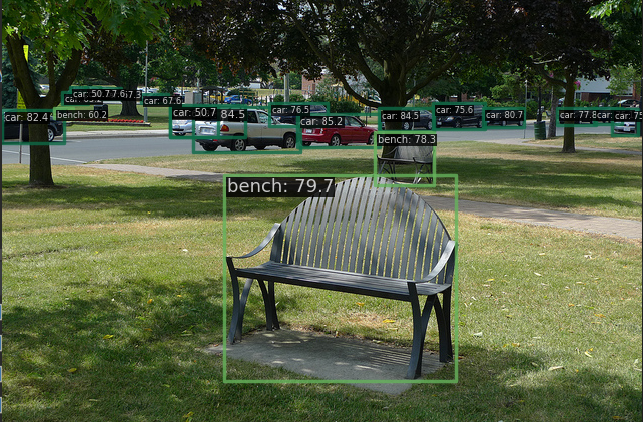
上述输入的是固定类别名,因此等价于 Open-Vocabulary Object Detection。如果将类别名设置为 COCO 全部类别,那么其实就可以转变了常规的目标检测算法。
(2) 图片+ 语言描述:There are a lot of cars here.

上述输入是自然语言描述,因此等价于 Grounding Object Detection
当然随着 ChatGPT 的强大功能,一个模型可以完成非常多不可思议的事情,在视觉领域大家也开始倾向于研究大一统模型,例如通用图像分割模型,一个模型可以实现封闭集和开放集语义分割、实例分割、全景分割、图像描述等等任务,典型的如 X-Decoder
[外链图片转存中…(img-mBo5eLqL-1700016796813)]
目前 MMDetection 也在支持该算法。后续 MMDetection 会重点支持多模态算法,欢迎有志之士来共同参与!
总结
将类别名设置为 COCO 全部类别,那么其实就可以转变了常规的目标检测算法。
(2) 图片+ 语言描述:There are a lot of cars here.
[外链图片转存中…(img-9PBtIXnS-1700016796813)]
上述输入是自然语言描述,因此等价于 Grounding Object Detection
当然随着 ChatGPT 的强大功能,一个模型可以完成非常多不可思议的事情,在视觉领域大家也开始倾向于研究大一统模型,例如通用图像分割模型,一个模型可以实现封闭集和开放集语义分割、实例分割、全景分割、图像描述等等任务,典型的如 X-Decoder
[外链图片转存中…(img-mBo5eLqL-1700016796813)]
目前 MMDetection 也在支持该算法。后续 MMDetection 会重点支持多模态算法,欢迎有志之士来共同参与!
总结
本教程提供了从数据到推理的全流程,并进行了详细的可视化分析,最后简单分析和探讨了下目标检测新的发展趋势。







